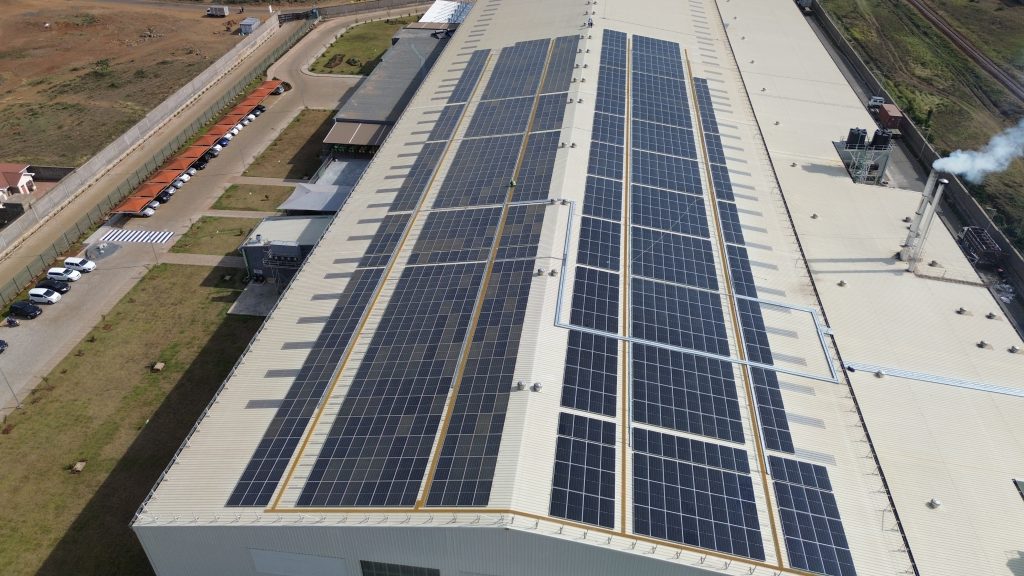
15 Jul How to Avoid Common Solar Installation Mistakes in 2025
As businesses continue to shift toward clean energy, solar power remains one of the most strategic investments in 2025. But while solar promises long-term savings and sustainability, the journey isn’t always smooth. Many companies still make common, and costly, mistakes during solar installation.
In this guide, we break down how to avoid these pitfalls and ensure your transition to solar is profitable and efficient.

Why Solar Power Still Makes Sense in 2025
Solar energy remains one of the most accessible and scalable clean power solutions available today. Thanks to dropping panel costs and improved financing options, more businesses are taking advantage of solar to reduce their power bills.
Government incentives and carbon regulations are also pushing companies to act fast. But rushing into a solar project without the right planning can backfire.
Common Solar Installation Mistakes Businesses Make
1. Skipping a Professional Site Assessment
A professional site assessment evaluates shading, roof angle, available sunlight, and panel layout. Skipping this step leads to poor energy output and lost revenue over time.
Before any purchase or installation, always work with a solar engineer or certified technician to analyze your site thoroughly.
2. Choosing the Wrong System Size
Some businesses overestimate their needs and buy oversized systems. Others underestimate and end up relying heavily on the grid.
A custom analysis of your energy consumption trends, both current and projected, is key to getting the right size. Accurate sizing saves money and increases efficiency.
3. Overlooking Future Expansion
A lot can change in five years. If your business grows, your energy needs will too. Installing a rigid system without considering future panel additions or battery storage is a missed opportunity.
Design with scalability in mind from day one.
4. Ignoring Local Regulations and Permits
Each region has different rules for grid connections, panel placement, and structural load. Failing to meet these requirements can delay installation, lead to fines, or require costly redesigns.
Work with a solar provider familiar with your local area to stay compliant.
5. Failing to Vet Installers
Not all solar installers offer the same quality. Inexperienced or unlicensed contractors can cut corners, leading to dangerous or inefficient setups.
Always verify credentials, check past installations, and ask for references. A trusted installer should offer clear warranties, service agreements, and transparent pricing.
6. Skipping Preventive Maintenance Plans
Solar panels are low-maintenance, but not maintenance-free. Dust, debris, and wear on inverters or connectors can slowly reduce output.
Set up an annual maintenance schedule from the start. Some providers offer packages that include cleaning, inspections, and remote monitoring.
7. Misunderstanding Financial Incentives
Many businesses assume they’ll automatically qualify for all incentives. But programs change, and some have deadlines or eligibility rules.
Work with a solar expert or consultant who understands the financial landscape. They can help you capture tax credits, depreciation benefits, and local rebates before they expire.
8. Forgetting to Educate Your Team
Your staff will interact with the solar system, whether directly or indirectly. Not knowing how it works or how to respond to alerts could lead to missed performance issues.
Basic training ensures smoother operation, faster response times, and better returns.
9. Not Monitoring Performance
Once your solar panels are installed, you should be tracking their output. Relying only on your monthly utility bill misses the chance to identify dips in performance.
Use a digital dashboard or solar monitoring app to get real-time data on how your system is performing.
10. Choosing Price Over Value
It’s tempting to go with the lowest bidder. But cheaper systems often use lower-quality components or come with weak warranties.
Solar is a 25+ year investment. Choosing quality and reliability over short-term savings pays off in the long run.
A Word From Spenomatic Solar
At Spenomatic Solar, we’ve seen businesses thrive when they get their solar strategy right. We’ve also seen how costly mistakes can be when companies skip key steps.
That’s why we take a personalized, full-scope approach, starting with detailed site assessments and ending with long-term support. Our mission is to help businesses harness solar the right way, profitably and sustainably.
If you’re considering solar in 2025, let’s talk. We’ll walk you through it step by step.
Final Thoughts
Solar power is one of the smartest moves your business can make in 2025. But smart doesn’t mean rushing. Avoiding these common mistakes is essential to getting the savings, security, and sustainability you’re looking for.
The right planning today ensures long-term profit and smooth operations tomorrow.
FAQs
- What’s the biggest mistake businesses make with solar installation?
Skipping a professional site assessment. It leads to poor panel placement and low energy output. - How do I know what size solar system my business needs?
Work with a solar consultant to analyze your energy usage over the past year. They’ll recommend the right system based on data, not guesswork. - Can I expand my solar system in the future?
Yes. But your initial system needs to be designed for expansion. Ask your installer to future-proof your layout and inverter capacity. - How much maintenance do solar panels require?
Very little. But annual inspections and occasional cleaning help maintain peak performance. - Will I still get power during a blackout?
Only if your system includes battery storage. Standard grid-tied systems shut off during outages for safety reasons. - Are there solar incentives for businesses in 2025?
Yes. Many regions offer tax credits, rebates, and depreciation benefits. Availability depends on your location and when you install. - How long does it take to install a commercial solar system?
Anywhere from a few weeks to a couple of months, depending on system size and permitting timelines. - What should I look for in a solar installer?
Check for licenses, experience, warranties, and verified client reviews. A reputable installer will be transparent and supportive.


Sorry, the comment form is closed at this time.